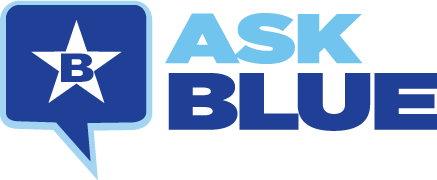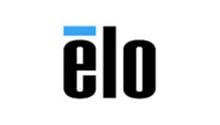Digital Signage
Components, solutions, and support—all under one roof.
BlueStar is your comprehensive destination for
Digital Signage excellence.
Our digital signage solutions leverage specialized, commercial-grade screens to deliver dynamic content such as advertisements, menu items, and centrally managed promotions. This technology enhances communication by providing real-time updates and visually compelling presentations, thereby driving engagement and productivity within a seamlessly integrated digital ecosystem.
Digital signage is versatile and impactful across various vertical industries. In retail, it elevates customer experiences with targeted promotions and interactive displays. In hospitality, it enhances guest services through informative and engaging content. Healthcare facilities use it for patient information and wayfinding, while corporate environments benefit from improved internal communications and branding. Educational institutions employ digital signage for announcements and event promotions, and transportation hubs rely on it for real-time updates and wayfinding. Whatever the industry, BlueStar delivers tailored digital signage solutions to meet your specific needs.
Select an option below:
- Why Digital Signage?
- Digital Signage Insights
- Digital Signage Checklist
Application Questions:
-
How many screens do they need?
-
What budget do they have?
-
What market will it be used in? Retail/Hospitality/Healthcare…
-
What is the purpose/requirement? (advertising/information/wayfinding/communication)
-
Describe the application
-
Where will it be used? Indoor/Outdoor etc.
Software Questions:
-
Is the end user already working with a software partner?
-
How often would they update the content?
-
Do they need a centralised content management system to control multiple screens?
-
Will it be interactive content?
-
Do they need templates or do they have an in house team to create content?
-
Are they interested in tracking viewer engagement and gathering analytics?
-
Are there any other third-party integrations you require?
-
In what language would they require support?
-
What kind of technical support or training will your team need?
Technology Questions:
-
What products will make up the solution:
-
What OS do they need?
-
Screen size?
-
Touch or non touch?
-
-
Integrated or separate computer module?
-
What content will be displayed? (Pictures/videos/sound)
-
-
What type of enclosure/how will it be mounted?
-
BlueStar provided e.g. Ergonomics
-
Reseller’s own
-
Need a partner?
-
-
Do they need accessories?(sensors/cameras/RFID)
-
Retailers today face a variety of challenges, and digital signage offers solutions to many of these issues. However, some of these challenges and the solutions that Digital Signage can bring are not limited to the Retail Sector: they are relevant for other verticals such as Healthcare, Manufacturing and Transport. Here are some of the main challenges and how digital signage helps overcome them:
- Competition and Differentiation
Challenge: Retailers need to stand out in a crowded market. Solution: Digital signage creates dynamic, engaging, and visually appealing displays that capture customer attention. Interactive and personalized content can differentiate a retailer from competitors. - Customer Engagement
Challenge: Maintaining and increasing customer engagement. Solution: Digital signage offers interactive features, real-time updates, and personalized content, which enhance the shopping experience and keep customers engaged. Touchscreens, QR codes, and social media integration can create a more immersive and interactive environment. - Changing Consumer Behaviour
Challenge: Adapting to rapid changes in consumer preferences and behaviours. Solution: Digital signage allows retailers to quickly update content to reflect current trends, promotions, and seasonal changes. This flexibility helps retailers stay relevant and respond promptly to consumer demands. - Cost Management
Challenge: Controlling costs while maintaining effective marketing. Solution: Digital signage reduces the need for frequent printing and distribution of traditional signage, lowering long-term costs. It also allows for centralized control of content, reducing labour costs associated with updating physical signs. - In-Store Navigation and Information
Challenge: Helping customers navigate the store and find information quickly. Solution: Digital wayfinding signs and informational displays guide customers through the store, providing directions, product locations, and additional information such as promotions or events. This improves the shopping experience and can lead to higher sales. - Customer Experience
Challenge: Providing a seamless and enjoyable shopping experience. Solution: Digital signage can enhance the ambiance with entertaining content, provide instant updates on stock availability, and offer self-service options such as digital kiosks for product searches. These features contribute to a more pleasant and efficient shopping experience. - Brand Consistency
Challenge: Maintaining consistent brand messaging across multiple locations. Solution: Digital signage can be centrally controlled, ensuring that branding and promotional messages are consistent across all retail locations. This uniformity strengthens brand identity and customer trust. - Inventory Management
Challenge: Communicating inventory levels and promotions effectively. Solution: Digital signage can display real-time information about stock levels, special offers, and new arrivals. This helps manage customer expectations and promotes products more effectively. - Security and Compliance
Challenge: Ensuring compliance with safety regulations and managing in-store security. Solution: Digital signage can be used to display real-time alerts, emergency instructions, and compliance-related information. This ensures customers and staff are informed about safety protocols and any immediate concerns. - Sustainability Goals
Challenge: Meeting sustainability targets and reducing environmental impact. Solution: Digital signage reduces the need for paper and other materials used in traditional signage. By minimizing waste and reducing energy consumption with efficient LED displays, retailers can support their sustainability initiatives.
In summary, digital signage addresses many of the challenges faced by retailers by enhancing customer engagement, providing flexibility, improving cost efficiency, and supporting sustainability efforts. Its ability to deliver dynamic, real-time content helps retailers adapt to the fast-paced retail environment and meet the evolving needs of consumers.
People are increasingly moving from traditional signage to digital signage for several key reasons:
- Dynamic Content: Digital signage allows for the display of dynamic content, including videos, animations, and real-time updates. This flexibility enables businesses to easily change their messaging to suit different times of day, special events, or promotions without the need for physical alterations. With the inclusion of sensor technology, it also allows companies to adapt their content based on the audience.
- Cost Efficiency: Although the initial investment in digital signage technology can be higher, it often leads to cost savings in the long run. Businesses save on printing, shipping, and installation costs associated with traditional signs, especially when frequent updates are needed.
- Remote Management: Digital signage systems can be managed remotely, allowing businesses to update content across multiple locations from a single control point. This reduces the need for physical presence and labor to change signs.
- Engagement and Interactivity: Digital signs can be interactive, incorporating touchscreens, QR codes, or integrations with mobile devices. This interactivity can enhance customer engagement, provide a more personalized experience and increase footfall.
- Attractiveness and Modern Appeal: Digital signs are often more visually appealing and can capture attention more effectively than static signs. The ability to use bright, moving images and vibrant colours can make advertisements and information more noticeable and engaging. Consumers are 50% more likely to retain the content of a digital sign than a traditional one.
- Analytics and Insights: Digital signage systems can be integrated with software that tracks interactions and engagement. This data provides valuable insights into customer behavior and the effectiveness of the displayed content, allowing businesses to optimize their messaging strategies.
- Environmental Impact: Digital signage can be more environmentally friendly over time, reducing the need for paper and other materials used in traditional signage. This aspect aligns with the growing emphasis on sustainability and corporate social responsibility.
- Versatility: Digital signage can be used for a variety of purposes beyond advertising, such as wayfinding, informational displays, emergency notifications, and entertainment. This versatility makes it a valuable tool in numerous settings, including retail, hospitality, healthcare, education, and corporate environments.
- Business Growth: in a retail environment, consumers are more likely to make unplanned purchases based on content shown on Digital Signage and also more likely to enter the store for the first time based on digital window displays, therefore making the implementation of Digital Signage a valuable asset to retailers.
Overall, the move to digital signage is driven by its ability to offer more engaging, flexible, and cost-effective solutions for communication and marketing needs.
Recent Articles
1 min read
BlueStar Retail & Hospitality Newsletter Q3.25
BlueStar: Oct 3, 2025
3 min read
The Untapped Self-Service Kiosk Potential Beyond Retail
BlueStar: Aug 5, 2025
Digital Signage FAQs
-
What is digital signage?
Digital signage refers to the use of digital displays to convey information, advertisements, or messages to a targeted audience. It typically involves the use of touch or non-touch displays to display content such as images, videos, text, and animations.
-
Where is digital signage used?
Digital signage is used in various settings including retail stores, restaurants, healthcare facilities, train stations, hotels, banks, stadiums, and more. Many locations can benefit from digital signage to either communicate vital information to their customer or to advertise the current offers to encourage more sales.
-
What components are needed for digital signage?The components required for digital signage typically include digital displays(touch or non-touch), media players, content management software, and mounting hardware. Additional accessories like cameras or sensors may be needed depending on how interactive it should be.
-
How easy is it to create/update content on digital signage?Content management for digital signage is typically done through a digital signage content management system (CMS). These platforms allow users to remotely upload, schedule, and update content across multiple displays from a centralized dashboard. Content can be scheduled to display at specific times or triggered by events such as weather conditions or audience interactions.
-
What are the benefits of digital signage?
Digital signage has many great benefits. It improves communication by delivering targeted messages and real-time updates. Its dynamic nature boosts engagement with high-quality visuals, videos, and interactive elements, turning passive viewers into active participants. Over time, it saves money by cutting out the need for ongoing printing and shipping of physical signs, and high-quality digital displays have a long lifespan. Digital signage also provides valuable insights by tracking viewer engagement and integrating with other systems, helping companies fine-tune their content and strategies.
Scalability is another big plus; businesses can easily grow their digital signage network by just adding more screens without needing to change existing software. It also opens up new revenue streams by selling ad space and promoting special offers. Overall embracing digital signage gives companies a competitive edge, making them look innovative and forward-thinking, while enhancing their brand image with modern and visually appealing displays.
-
Why Now Digital Signage?Digital signage is at a pivotal moment with significant market potential, projected to grow from $35 billion in 2022 to $44.7 billion by 2026. It's the fastest-growing segment in the Pro-AV market, poised for innovative applications like exterior building signage. This expansion boosts visibility and engagement, making it a valuable business tool. Additionally, it offers businesses an extra revenue stream through ad space sales on their buildings. Investing in digital signage now ensures a competitive edge in a dynamic market landscape.
-
Why buy Digital Signage through Bluestar?Choosing BlueStar for your digital signage needs ensures a comprehensive, all-in-one solution. We offer a one-stop shop for both hardware and software, simplifying your procurement process. Our dedicated Account Manager and Business Development Team provide extensive support from installation to maintenance. Additionally, BlueStar's value-added services, including customization, configuration, and logistics support, tailor the solution to your specific requirements. With BlueStar, you get a reliable, customized digital signage solution that meets your business needs.

Need a Software Solution?
Independent Software Vendors (ISVs) focus exclusively on software solutions which are sold through a reseller channel, offering numerous advantages to BlueStar Partners with ISVs allows you to provide a broader range of solutions to your end users, delivering comprehensive and diverse services.
Collaborating with ISVs also facilitates entry into new verticals, opening fresh markets and growth opportunities. These strategic partnerships enhance profitability and enable value-added services, driving business expansion.
BlueStar partners with ISVs across various industries, including Retail, Hospitality, and Warehousing. If you need a software partner for a project or smaller opportunity, search our portal for an ISV that meets your requirements.
Featured Podcasts
If you'd like to learn more about the digital signage market check out some of our recent podcasts.
Partner with BlueStar for Unparalleled Distribution
As a trusted distributor, BlueStar is committed to providing resellers with the latest and most innovative technology solutions. By partnering with us, you gain access to cutting-edge technology solutions, empowering your customers with the tools they need to succeed. Here's why you should choose BlueStar as your distribution partner:

With years of experience in the industry, BlueStar has deep knowledge and understanding of the technology landscape. Our team of experts is ready to help you find the right solutions for your customer's specific needs.
BlueStar offers comprehensive support throughout the entire sales process. From pre-sales consultations to technical support, we ensure that you have the resources and guidance necessary to deliver exceptional service to your customers.
BlueStar offers a wide range of complementary products from leading manufacturers. This allows you to provide your customers with a complete solution that meets their unique requirements.
BlueStar goes beyond product distribution. We offer value-added services such as customization, configuration, and logistics support to ensure a seamless experience for you and your customers.
By partnering with BlueStar, you become part of a thriving network of resellers and industry experts. Benefit from networking opportunities, educational resources, and collaborative initiatives that will drive your business forward.
Digital Signage Use Cases:
There are a variety of solution areas and use cases broadly covered by the term digital signage, including:
- Video walls
- Menu Boards
- Corporate Communication Displays
- Kitchen Display Systems
- Interactive Maps
Interested in Becoming a Reseller Partner?
Come see what makes us different.









